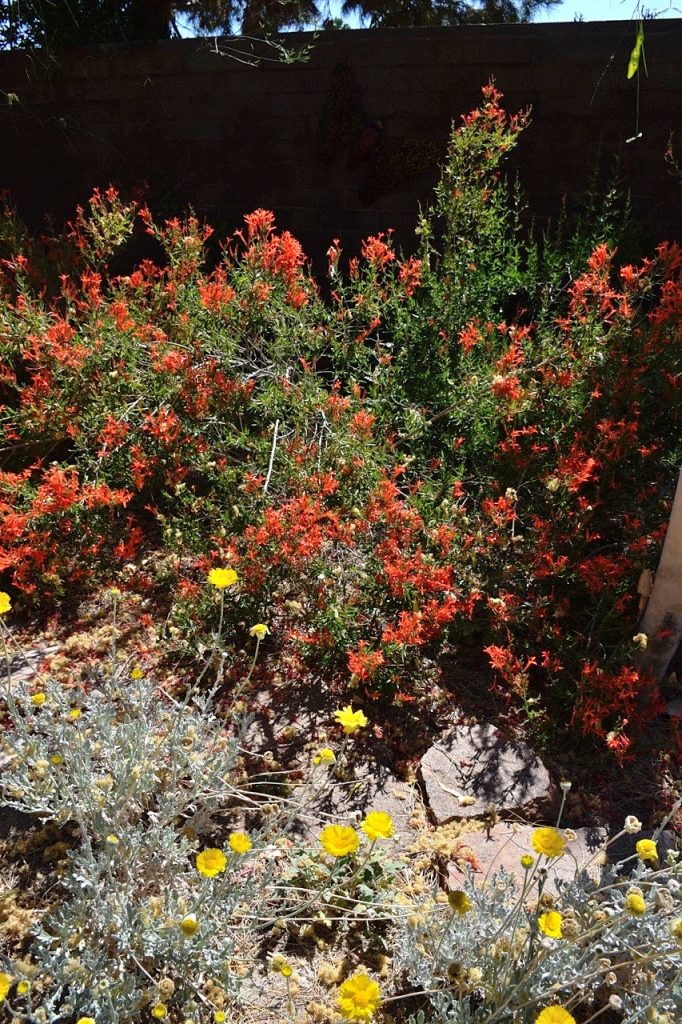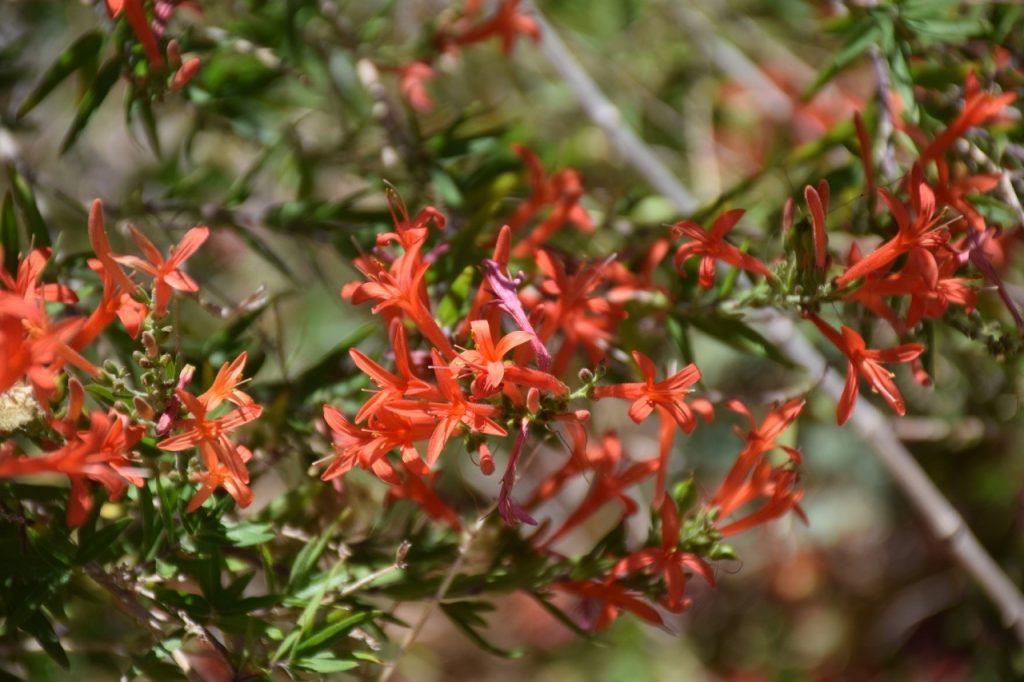For gorgeous blooms that will add vibrant color to your landscape and attract pollinators, such as hummingbirds, choose the Flame Anisacanthus.
Description
Flame Anisacanthus, Anisacanthus quadrifidus var. wrightii, has brilliant red to orange flowers that appear from June to November. The 1 ½-inch-long flowers are narrow and tube-shaped at the base, separating above into four parts that form a cross shape. This deciduous, irregularly branching shrub can reach a height of 3 feet with a 4-foot spread. When young, the branches are dull green and covered with a soft fuzz; older branches have a tan, shredding bark. The leaves are 1½ to 2 inches long and ¾ inch wide at the base, narrowing to a point at the tip.
Native Distribution
Flame Anisacanthus grows on rocky stream banks and floodplains in southwestern Texas and in Coahuila, Nuevo León and Tamaulipas, Mexico.
Culture
Full sun promotes the best flowering, although Flame Anisacanthus will tolerate partial shade. Once established, it is drought tolerant. Supplemental water will encourage heavier flowering. The shrub is cold hardy to 5 degrees Fahrenheit. It will grow in clay, loam, sand, or caliche, but good drainage is preferred. Cut the plant severely in late winter to promote full growth and more flowers.

Landscape Use
This long-blooming shrub could be used in a flower garden; place it near the back or along the edges so it has room to spread. Another potential use is in a naturalistic desert landscape. Hummingbirds and butterflies are attracted to the brightly colored flowers of Flame Anisacanthus.
Did you know that up to 70 percent of water use is outdoors? That’s why we love desert plants and feature them each month. You can learn more about Flame Anisacanthus and other plants on our Arizona Low-Water-Use Plants page. Visit our page on Choosing and Planting Low Water-Use Plants for tips on plant selection and how to plant properly.
Also, be sure to read through all of our featured Plant of the Month blogs!
From time to time, Water – Use It Wisely features guest bloggers who write about topics related to water and water conservation. Judy Mielke is a horticulturist, Landscape Architect and the author of one of Water – Use It Wisely’s favorite books. You can find plant descriptions like this and many more in her book Native Plants for Southwestern Landscapes.


